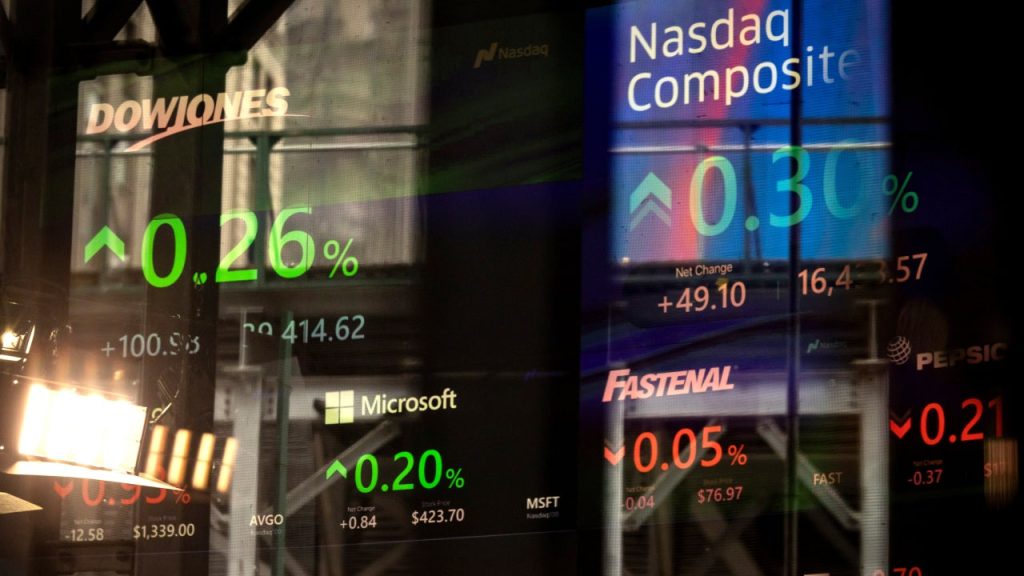The Nasdaq stock exchange contains some of the most attractive investments on the stock market, including quickly growing tech names. Investors can own them all by purchasing a Nasdaq index fund, making it easy to own such bellwethers as the Magnificent 7 stocks. But a variety of such funds exist, and you want to be careful about what exactly you’re buying.
Here are some top Nasdaq exchange-traded funds (ETFs) and key things you need to look for.
6 top Nasdaq ETFs
The funds below invest primarily in the Nasdaq-100 index, which includes the largest 100 non-financial stocks trading on the Nasdaq stock exchange – companies such as Apple, Amazon, Microsoft, Alphabet, Meta Platforms, Netflix and many more. Don’t get that confused with the Nasdaq Composite, an index which includes all stocks trading on that exchange.
Other ETFs below include leveraged funds and short funds. Leveraged funds allow investors to potentially make a larger return than what’s delivered by the index itself. Short funds let investors to bet against the index allowing them to profit when the index falls. (Data as of May 13, 2024.)
Invesco QQQ Trust (QQQ)
This fund aims to mimic the Nasdaq-100 index, though it’s actually dramatically outperformed that index.
- Annual returns (5 years): 19.8 percent
- Expense ratio: 0.20 percent
Invesco Nasdaq 100 ETF (QQQM)
This fund – also from Invesco – tracks the Nasdaq-100, too, but it does it at even lower cost. The fund has not existed for five years, but its three-year returns are comparable to those of QQQ.
- Annual returns (3 years): 11.5 percent
- Expense ratio: 0.15 percent
ProShares UltraPro QQQ (TQQQ)
This leveraged fund uses derivatives to amp up the return of the Nasdaq-100, and it targets a daily return of three times that index. It also charges a healthier expense ratio for that benefit.
- Annual returns (5 years): 31.8 percent
- Expense ratio: 0.88 percent
Direxion Nasdaq-100 Equal Weighted ETF (QQQE)
This fund holds an equal weighting in the Nasdaq-100 stocks rather than the typical weighting that is heavily skewed to the largest tech stocks.
- Annual returns (5 years): 13.8 percent
- Expense ratio: 0.35 percent
ProShares UltraPro Short QQQ (SQQQ)
This fund goes up as the Nasdaq-100 goes down, allowing you to short-sell the index in a convenient fund.
- Annual returns (5 years): -58.4 percent
- Expense ratio: 0.95 percent
Fidelity Nasdaq Composite Index ETF (ONEQ)
This reasonably priced fund tracks the Nasdaq Composite (not the Nasdaq-100), so investors get broader exposure to that larger index and less concentration in the biggest tech stocks.
- Annual returns (5 years): 16.8 percent
- Expense ratio: 0.21 percent
Risks of ETFs
ETFs can be an attractive away to invest in the market, allowing you to get the return of a specific index, but they still have drawbacks:
- Volatility: Just like individual stocks, a stock ETF can be highly volatile, though it tends to be less so than single stocks. You’ll need to understand that stocks can go anywhere in the short term and you’ll have to hold on for years to enjoy the strong long-term returns.
- Tracking risk: A fund tracking a specific index may not accurately deliver the returns of that index – that’s called tracking risk. In the case of some funds above, that’s actually worked in investors’ favor, since the funds have dramatically outpaced their index. But it could just as easily work in the other direction, with the fund unable to track its target.
- Structural costs: Leveraged and short funds have extra costs by their very nature, as their derivative positions expire and need to be re-established on a regular basis. These costs lead to a drag on their returns over time, even if they perform well.
The Nasdaq-100 is a popular stock index, but investors have other popular choices, especially if they want broader diversification than just the largest tech stocks. The most popular index is the Standard & Poor’s 500, which includes stocks across every major industry. Funds from the S&P 500 and the Nasdaq-100 regularly rank among the best ETFs, offering high returns and low cost.
Bottom line
ETFs can allow you to invest in the Nasdaq stock index quickly and easily, offering an easy means to harness the strong returns available there. But be sure to understand exactly what you’re buying and whether it fits your investment objectives and risk tolerance. Work with one of the best brokers for ETF investing for a strong range of features that can help you succeed.
Editorial Disclaimer: All investors are advised to conduct their own independent research into investment strategies before making an investment decision. In addition, investors are advised that past investment product performance is no guarantee of future price appreciation.
Read the full article here




